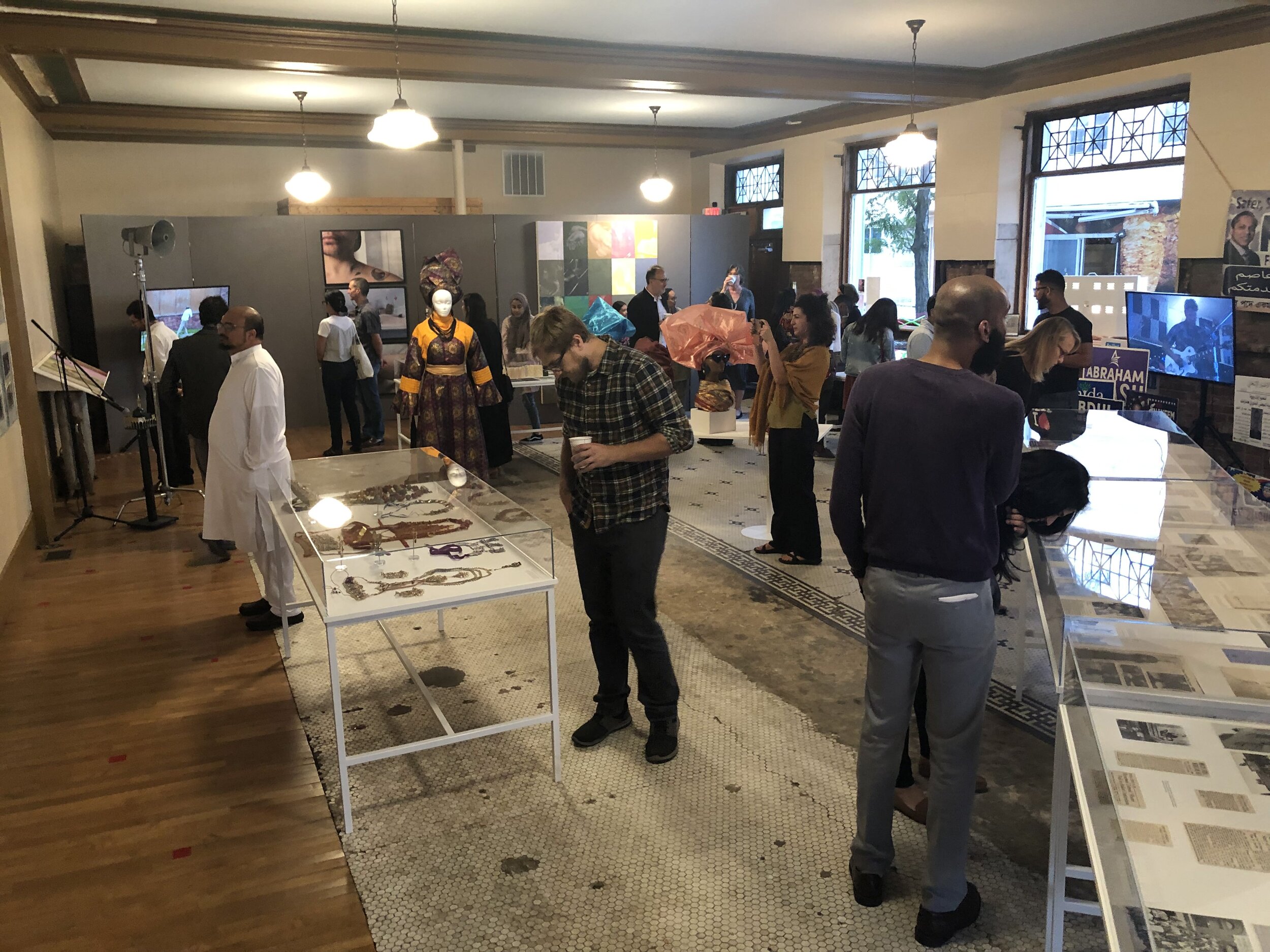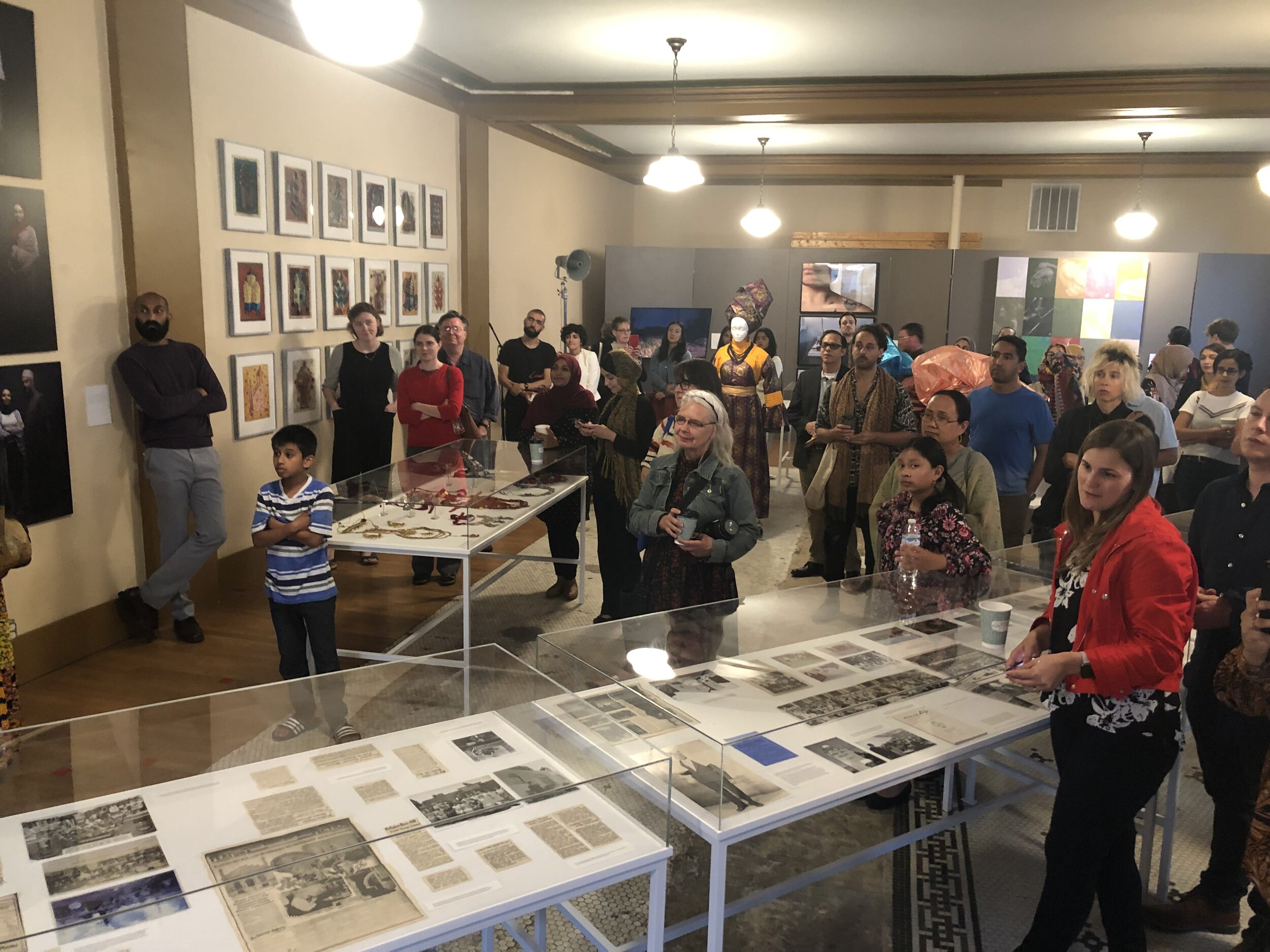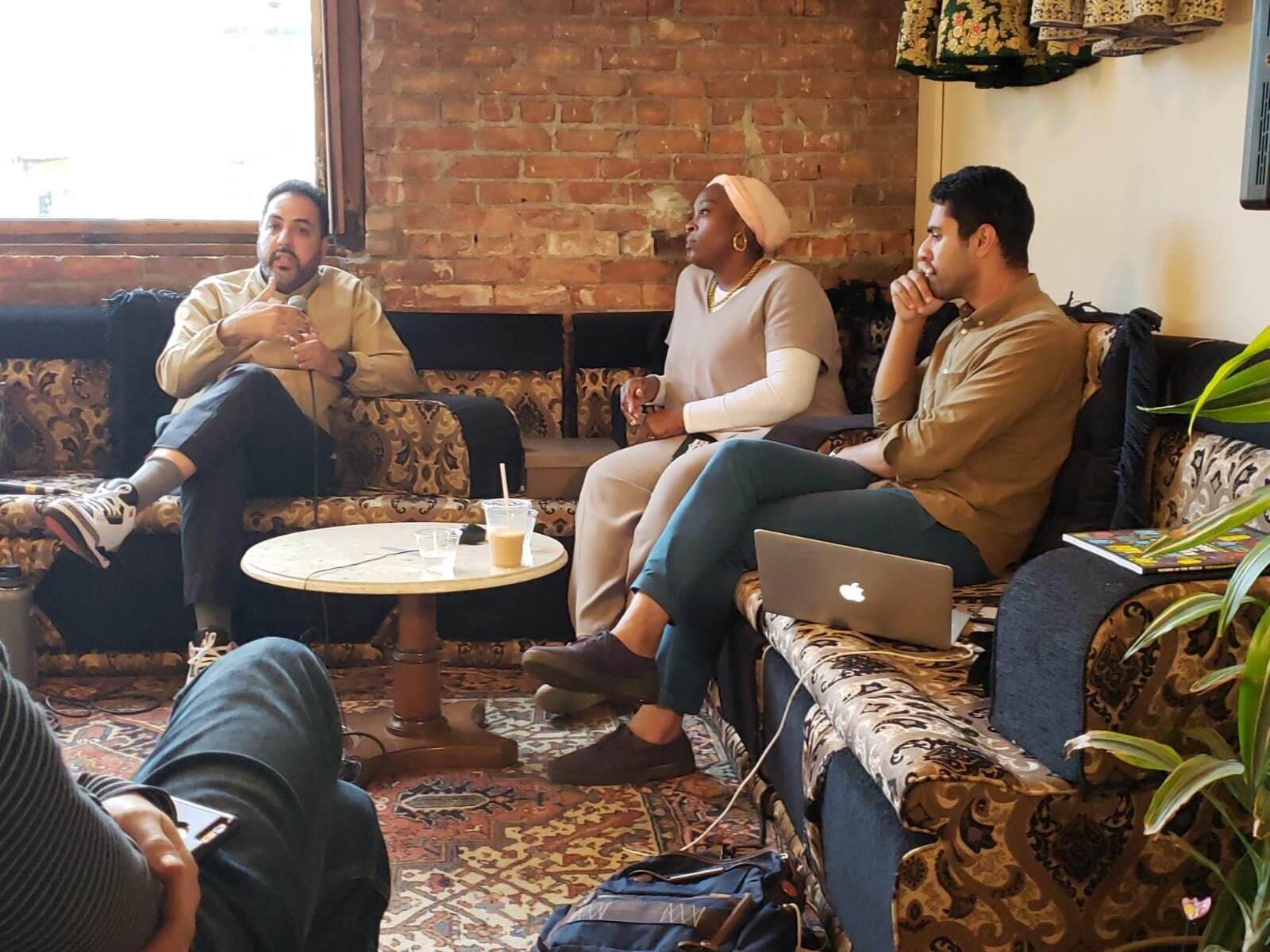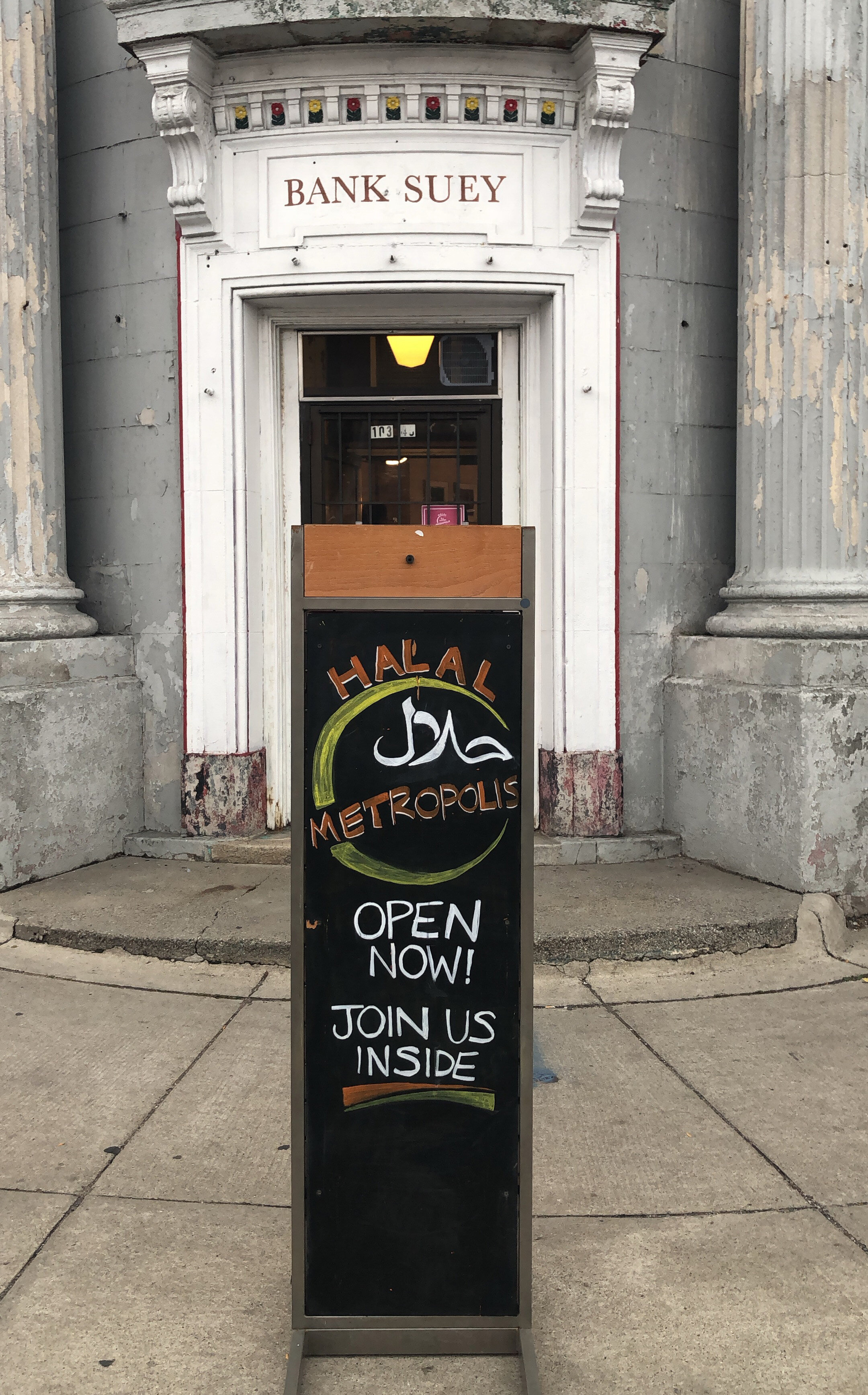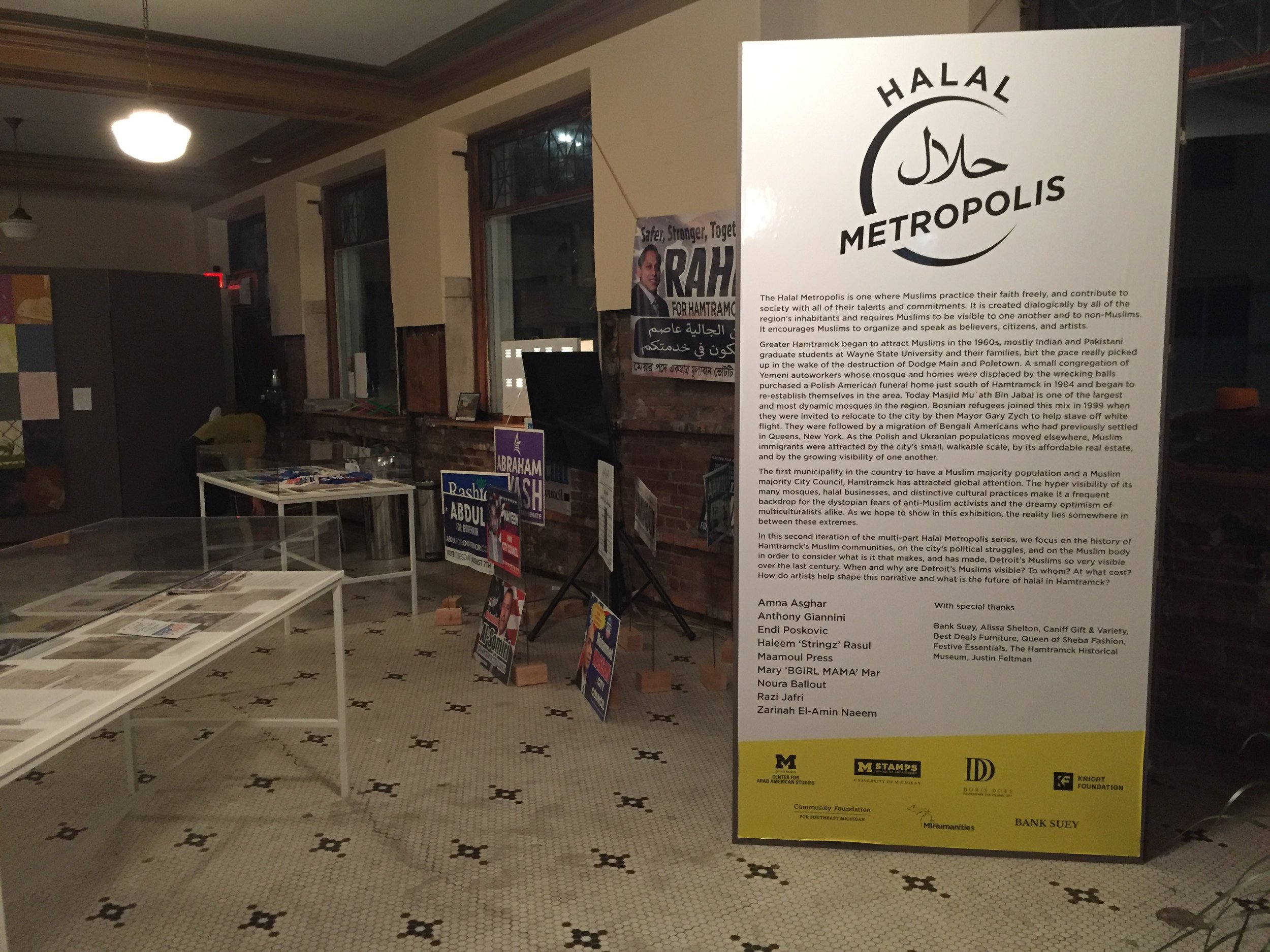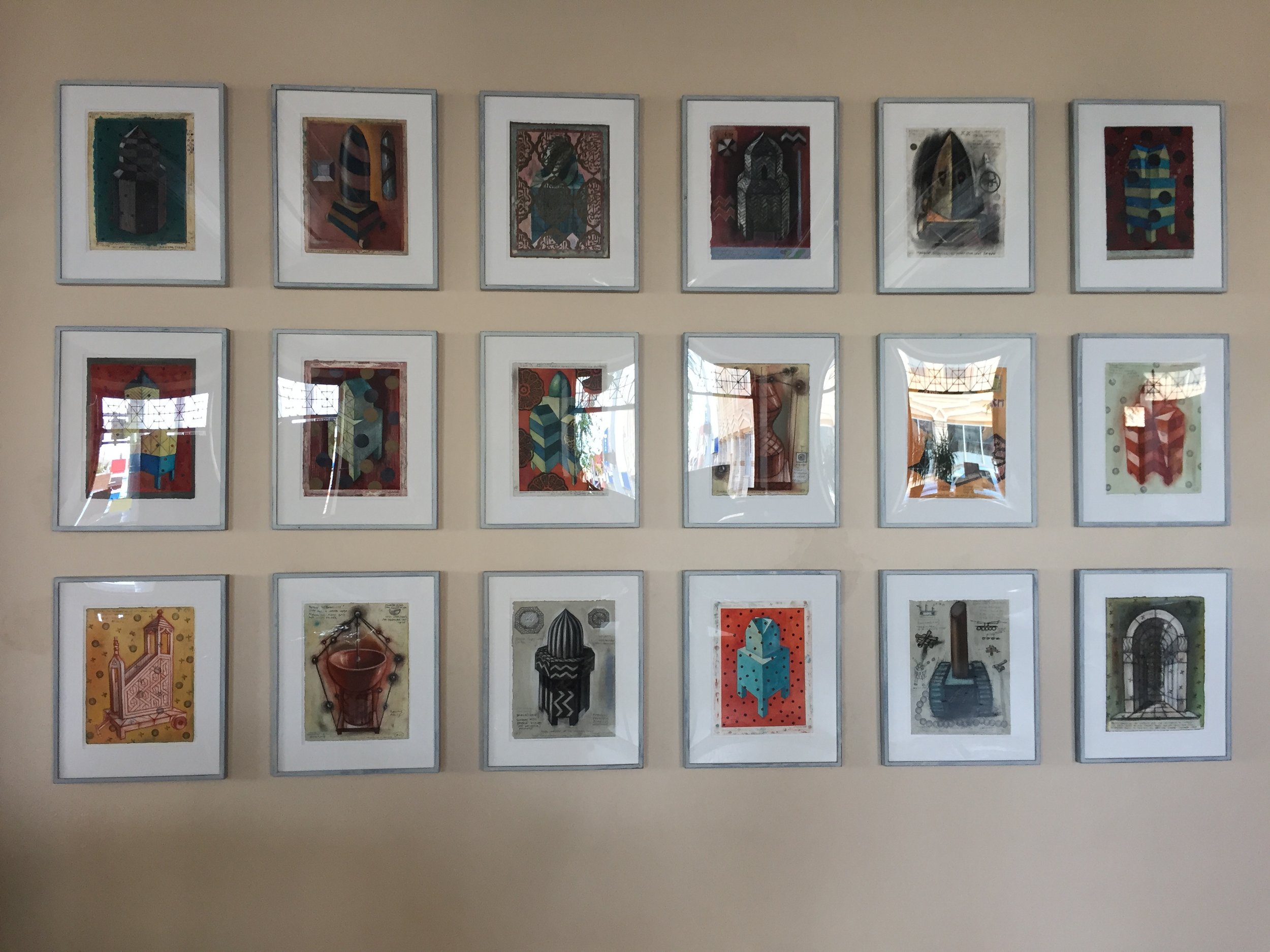Hamtramck
Bank Suey
August 30 - September 28, 2019
The Halal Metropolis is one where Muslims practice their faith freely, and contribute to society with all of their talents and commitments. It is created dialogically by all of the region’s inhabitants and requires Muslims to be visible to one another and to non-Muslims. It encourages Muslims to organize and speak as believers, citizens, and artists.
Greater Hamtramck began to attract Muslims in the 1960s, mostly Indian and Pakistani graduate students at Wayne State University and their families, but the pace really picked up in the wake of the destruction of Dodge Main and Poletown. A small congregation of Yemeni autoworkers whose mosque and homes were displaced by the wrecking balls purchased a Polish American funeral home just south of Hamtramck in 1984 and began to re-establish themselves in the area. Today Masjid Mu`ath Bin Jabal is one of the largest and most dynamic mosques in the region. Bosnian refugees joined this mix in 1999 when they were invited to relocate to the city by then Mayor Gary Zych to help stave off white flight. They were followed by a migration of Bengali Americans who had previously settled in Queens, New York. As the Polish and Ukranian populations moved elsewhere, Muslim immigrants were attracted by the city’s small, walkable scale, by its affordable real estate, and by the growing visibility of one another.
The first municipality in the country to have a Muslim majority population and a Muslim majority City Council, Hamtramck has attracted global attention. The hyper visibility of its many mosques, halal businesses, and distinctive cultural practices make it a frequent backdrop for the dystopian fears of anti-Muslim activists and the dreamy optimism of multiculturalists alike. As we hope to show in this exhibition, the reality lies somewhere in between these extremes.
In this second iteration of the multi-part Halal Metropolis series, we focus on the history of Hamtramck’s Muslim communities, on the city’s political struggles, and on the Muslim body in order to consider what is it that makes, and has made, Detroit’s Muslims so very visible over the last century. When and why are Detroit’s Muslims visible? To whom? At what cost? How do artists help shape this narrative and what is the future of halal in Hamtramck?
Participating Artists:
Amna Asghar
Nour Ballout
Zarinah El-Amin Naeem
Anthony Giannini
Razi Jafri
Osman Khan
Maamoul Press
Mary ‘BGIRL MAMA’ Mar
Endi Poskovic
Haleem ‘Stringz’ Rasul
Special Thanks:
Bank Suey, Alissa Shelton, Caniff Gift & Variety, Best Deals Furniture, Queen of Sheba Fashion, Festive Essentials, The Hamtramck Historical Museum, Justin Feltman
Muslim Cool
Su’ad Abdul Khabeer and Sohail Daulatzai
We explore the intersection of Islam, hip-hop, and pop culture



